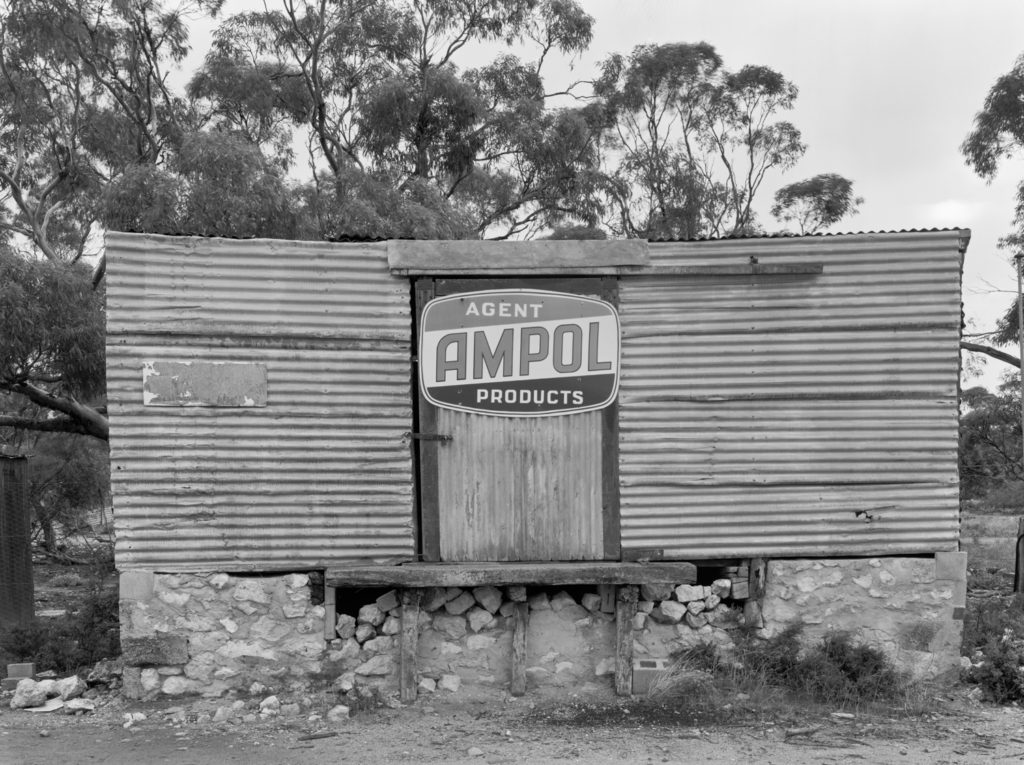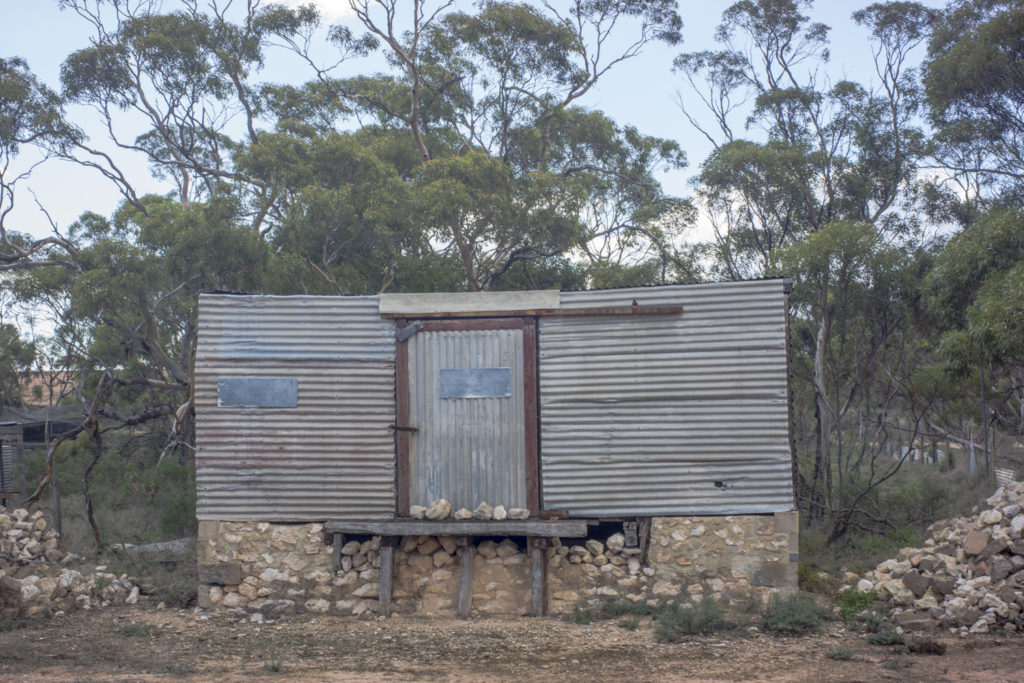In a previous post I mentioned how I had reconnected to an old photo trip that I made in the 1980s in the VW Kombi to Mantung and Galga in the South Australian Mallee. However, I didn’t mention that I had some re-photography possibilities in mind. On the earlier trip I made several black and white photos with a large format camera ( these are in my film gallery on the Mallee Routes website), and I was wondering whether it was possible/feasible to re-photograph the sites and buildings that I’d photographed in the 1980s? If it were feasible, would it be worthwhile doing? If it were worthwhile, what would re-photography mean in the context of the Mallee Routes project?
These questions were in the back of my mind when I was at the Loxton photo camp in late April and I was exploring this area of the South Australian Mallee. I returned to the particular places I had photographed at Mantung and Galga in the 1980s to see what remained, what had disappeared, and what could be re-photographed. In particular I was looking for this old, petroleum storage shed in Galga:

Rephotography is the process of photographing a picture again after a period of time has passed. In the past 40 years, there has been a large increase in use of rephotography within artistic and cultural projects around the world. They are usually designed to better understand change to the landscape over time. These days the internet is awash with software-aided ‘computational rephotography’, augmented by Photoshop, such that ‘then’ and ‘now’ have been mashed-up, transposed and composited like never before. My approach, in contrast, has its roots in the pre-digital re-photography of the 1970s/1980s.
What I had in mind is the Second View: Rephotographic Survey Project (1977-79) undertaken by Mark Klett, Ellen Manchester and JoAnn Verburg (with assistance from Gordon Bushaw and Rick Dingus) relocated and re- photographed one hundred and twenty sites in the American West that had originally been photographed a century earlier by Timothy O’Sullivan, William Henry Jackson, John K. Hillers, Andrew J. Russell and Alexander Gardner during the government survey expeditions to the region.
An Australian rephotographic project is Judging Architecture: Issues, Divisions, Triumphs, edited by Philip Goad. The project was devised in 2002 by John Gollings and David Pidgeon, who conceived of a book revisiting, re-judging and, importantly, rephotographing the best buildings from 75 years of Victorian Architecture Awards – from 1929 to 2003.
Whilst walking around the deserted hamlet of Galga I eventually stumbled across what appeared to be an abandoned house with lots of old farming machinery scattered around its yard. The scene looked familiar. My memory was jogged. Then I saw the shed, and this is the picture I made with my digital camera:

So I wasn’t really interested in the understanding of re-photography that places the emphasis on mathematical accuracy. The re-photographer, on this account, determines the season and the time of day from observation of the vegetation and the shadows shown. They set up a similar type of camera at the original viewpoint, at approximately the right season and time, and wait with the original view in hand, until the shadows reach the same positions relative to surrounding objects. The aim is extreme accuracy in the sense that it should be possible to place one image over the other, and see the edges of buildings match exactly.
What is the point of constructing exact replicas through juxtaposing the original views with a second view taken decades latter? It appears to be almost a parody of scientific accuracy. That aligns photography with scientific positivism, which is at odds with the significance of the memories of my experience of the Mallee in the 1980s. Memory is no less tied to space/place as well as time.
Memory is what motivated my reconnection to the old locations. So the re-photography is more personal than the value neutral objectivity in the scientific sense. The second view photography is a form of remembrance and the overcoming of forgetting. Remembrance is also a return, a coming-back, or a re-placing; a placing back into that which we never really leave. Place imparts a ‘fixity’ to memory that memory would not otherwise possess.
If the landscape is layered with the effects of land use and social life, then the photographs become interpretations of this layering within a cultural context? The second view photograph then re-signifies the viewer’s relationship to the Mallee landscape and the past it represents. This construct means that the Mallee landscape becomes more textual and discursive, and so it counters the traditional representation of the landscape as a framed pictorial entity that can be viewed at a single glance.
That is the rationale. Would I now go back and re-photograph the shed with my large format camera?


[…] I decided to experiment with it whilst on the Wallaroo phototrip in 2016 and when I was exploring the Murray Mallee in 2017, since the Sinar offered more camera movements and more flexibility than the Linhof […]